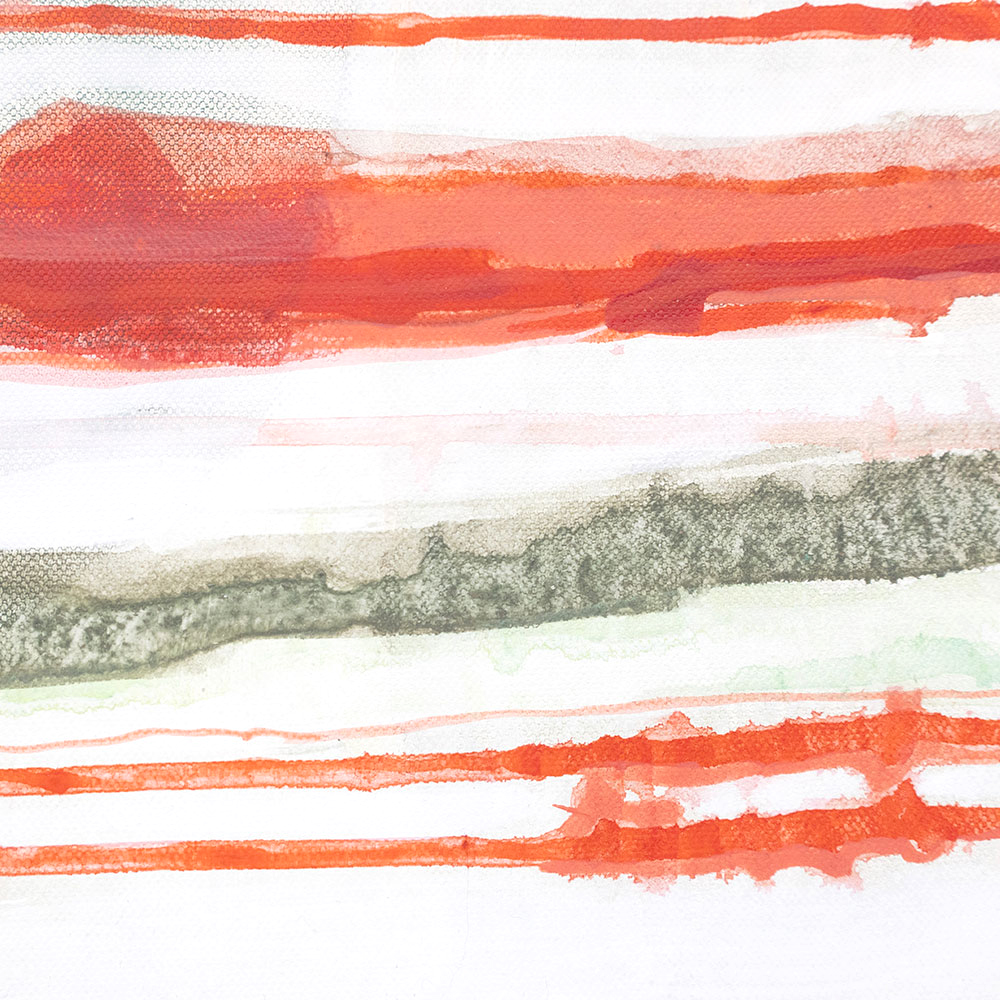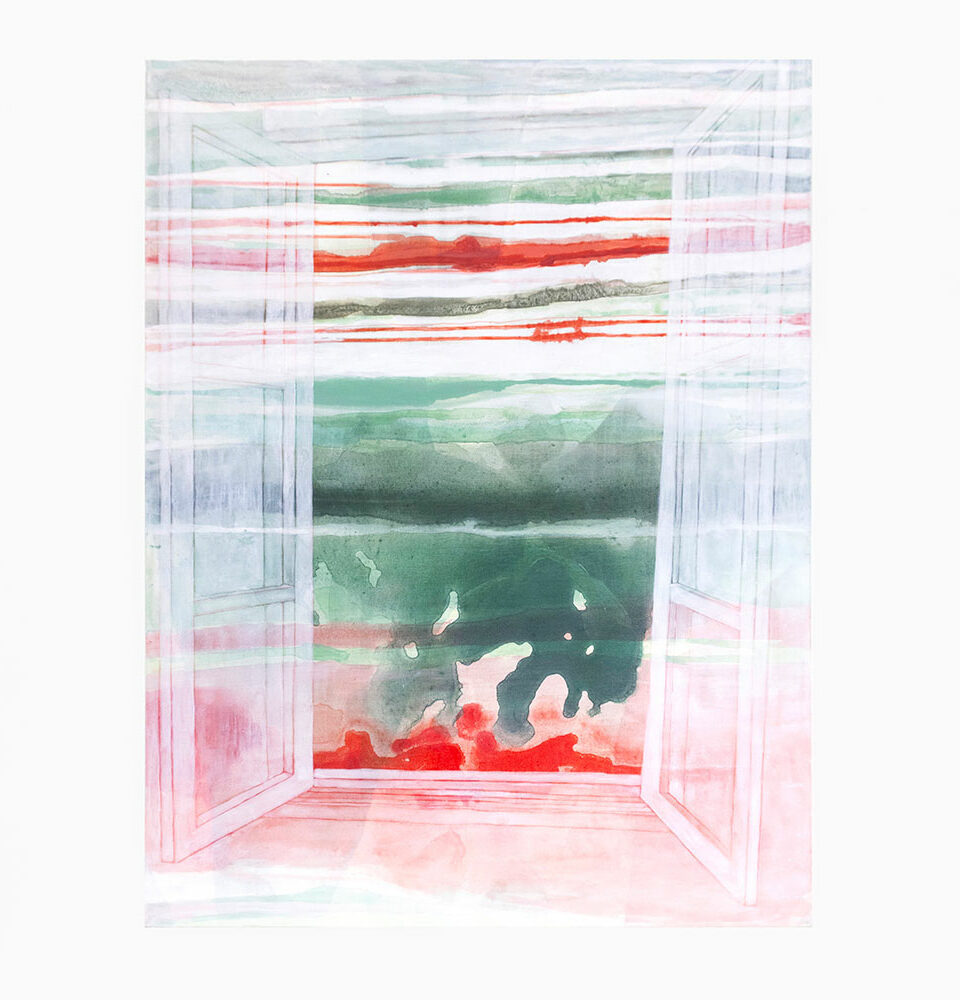Róża Polska / Rose Slavy, Untitled V (from the « Ok(n)o » series )
2023, 89 x 116 cm
Acrylic on canvas
Peinture acrylique sur toile
« Man is the half-open being »
Gaston BACHELARD
Through a half-open window, light enters, opens and metamorphoses beings and things, filling them with what we could call “grace”. To tell the truth, for years this word was completely foreign to me. BUT today, when it comes to the act of opening up and – I discover its extraordinary relevance. All art is the testimony of what penetrates us and how we are penetrated, of this passing through of the world into the being which transports it outside.
If, for centuries, the painting has been considered a window open to the world, it is also a door ajar onto ourselves. The series of paintings “Ok(n)o” plays on similarities between two words from my native Polish language: “okno” (window) and “oko” (eye). Each window and each eye receives light and through this process it becomes a sort of magical lens embodying the world through itself, distorting and intensifying it.
The window – with its frame caressing the clouds, with its glasses dotted with reflections, with its curtains swollen by the breath – is inhabited by presence which reveals itself in the abstract forms. That is how the chaos, the formless and the accident, mysteriously, give birth to meaning. Thus, in the “window paintings”, through spots, drips and lines, the viewer’s eye finds a returned gaze staring at him from a gaping hole. Wasn’t surrealism born with this little phrase by André Bréton “there is a man cut in two by the window”…? In the solid wall of our certainties, here it is – art – a small window – which « opens us » to welcome in a state of grace the whole world descending through shimmering reflections. On the border between inside and outside, the window is a symbol of rebirth.
« L’homme est l’être entr’ouvert »
Gaston BACHELARD
A travers une fenêtre entrebâillée, la lumière entre, ouvre et métamorphose des êtres et des choses en les remplissant de ce qu’on nommera ici « la grâce ». A vrai dire, pendant des années, ce mot m’était complètement étranger, « hors sujet ». MAIS aujourd’hui, quand il s’agit de l’acte de s’ouvrir et, justement, sortir « hors de soi » – je découvre son extraordinaire pertinence. Tout art est le témoignage de ce qui nous traverse et comment nous sommes traversé(e)s, de cette pénétration du monde dans l’être qui le transporte en-dehors.
Si, depuis des siècles, le tableau est considéré comme une fenêtre ouverte sur le monde, il est également une porte entrebâillée sur nous-mêmes. La série de peintures « Ok(n)o » joue sur des ressemblances entre deux mots de ma langue natale polonaise : « okno » (fenêtre) et « oko » (oeil). Car chaque fenêtre et chaque oeil réceptionne la lumière et par delà, elle/il devient une sorte de lentille magique incarnant le monde à travers soi, en le déformant et l’intensifiant.
La fenêtre – avec son cadre caressant les nuages, avec ses vitres parsemées de reflets, avec ses voilages gonflés par le souffle – est habitée de présences qui se révèlent dans l’abstrait. Le chaos, l’informe et l’accident donnent, mystérieusement, naissance au sens. Dans les « peintures-fenêtres », à travers des taches, des coulures et des lignes, l’oeil du spectateur retrouve un regard retourné le fixant à travers un trou béant. Le surréalisme, n’est-il pas né avec cette petite phrase d’André Bréton « il y a un homme coupé en deux par la fenêtre »…? Dans le mur solide de nos certitudes, voici l’art – une petite fenêtre – qui nous ouvre pour accueillir en état de grâce le monde entier descendant en nous par des reflets miroitants. A la frontière entre dedans et dehors, la « fe-naître » est un symbole de renaissance.





